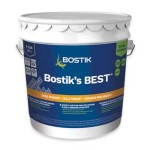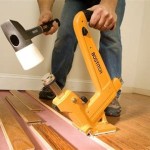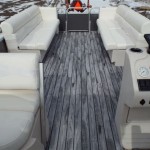White Pine Flooring: Exploring its Advantages and Disadvantages
White pine flooring, a readily available and historically significant material, presents a compelling flooring option for homeowners and builders alike. Characterized by its soft texture, light color, and relatively lower price point compared to other hardwood species, white pine offers a unique aesthetic and practical appeal. However, like any flooring choice, it is crucial to understand the inherent advantages and disadvantages of white pine before making a decision about its suitability for a particular space.
White pine, specifically Eastern White Pine (Pinus strobus), has been used in construction and woodworking for centuries. Its prevalence in colonial homes throughout North America testifies to its abundance and workability. This widespread use has led to a resurgence of interest in white pine flooring, particularly among those seeking to achieve a rustic or historically accurate aesthetic. This article will delve into the specific qualities of white pine flooring, examining its strengths and weaknesses to provide a comprehensive understanding of its performance characteristics.
The Allure of White Pine: Key Advantages
White pine flooring offers several notable advantages that contribute to its popularity. These range from its cost-effectiveness and aesthetic appeal to its workability and environmental sustainability. These factors collectively make white pine a viable option for various flooring applications, particularly in residential settings.
Cost-Effectiveness: One of the most significant draws of white pine flooring is its price. Compared to hardwoods like oak, maple, or walnut, white pine is typically much more affordable. This lower cost makes it an attractive option for budget-conscious homeowners or for large-scale flooring projects where minimizing material expenses is a priority. The lower initial investment can allow for allocation of funds to other areas of the renovation or construction project.
Aesthetic Appeal: White pine boasts a unique and charming aesthetic. Its light color, ranging from creamy white to pale yellow, creates a bright and airy feel in a room. The grain pattern, while relatively subtle compared to some hardwoods, adds a touch of natural character. Over time, white pine develops a warm, honeyed tone, which contributes to its rustic appeal. The presence of knots, typical in pine, further enhances the natural and aged appearance, particularly favored in farmhouse or cottage-style interiors. This natural variation in color and grain makes each floor unique and aesthetically pleasing.
Workability and Ease of Installation: White pine is renowned for its softness and workability. This makes it easier to cut, shape, and install than denser hardwoods. The soft texture allows for easier nailing and screwing, reducing the risk of splitting or cracking during installation. This ease of installation can save time and labor costs, particularly for DIY enthusiasts. Its light weight also contributes to easier handling and transportation, further simplifying the installation process.
Environmental Sustainability: White pine is a rapidly renewable resource, especially when sourced from sustainably managed forests. The fast growth rate of white pine allows for quick replenishment, minimizing the environmental impact of harvesting. Choosing white pine flooring from certified sustainable sources ensures responsible forestry practices and contributes to the conservation of forest ecosystems. Furthermore, pine flooring often requires less energy to process compared to some denser hardwoods, reducing its overall carbon footprint.
The Challenges of White Pine: Key Disadvantages
Despite its advantages, white pine flooring is not without its drawbacks. Its inherent softness and susceptibility to damage present challenges that potential buyers must carefully consider. Understanding these limitations is crucial for determining whether white pine is the appropriate flooring choice for a specific lifestyle and application.
Softness and Durability: The primary disadvantage of white pine flooring is its softness. With a Janka hardness rating typically ranging from 380 to 420, it is significantly softer than hardwoods like oak (around 1290) or maple (around 1450). This softness makes it prone to dents, scratches, and dings from everyday wear and tear. Heavy furniture, pet claws, and even high heels can easily leave marks on the surface. This lack of durability makes white pine less suitable for high-traffic areas or homes with active families or pets. While some people appreciate the aged and distressed look that develops over time, others may find the susceptibility to damage unacceptable.
Susceptibility to Moisture Damage: White pine is more susceptible to moisture damage than many other flooring options. It can absorb moisture from the air, leading to expansion, contraction, and warping. This makes it unsuitable for installation in bathrooms, kitchens, or basements where moisture levels are typically higher. High humidity levels can also cause cupping or crowning of the boards, further compromising the floor's appearance and structural integrity. Proper sealing and regular maintenance are essential to mitigate the risk of moisture damage, but even with precautions, white pine may not perform well in damp environments.
Maintenance Requirements: Due to its softness, white pine flooring requires more frequent maintenance than harder wood floors. Regular sweeping or vacuuming is necessary to remove dirt and debris that can scratch the surface. Promptly cleaning up spills is crucial to prevent staining and moisture damage. The floor may also require periodic refinishing to remove scratches and dents and to restore its original appearance. Applying a durable finish can help to protect the floor, but even with a protective coating, white pine will likely show signs of wear and tear more quickly than harder flooring options. Proper maintenance is key to extending the lifespan and preserving the appearance of a white pine floor, but it also demands a commitment of time and effort.
Considerations for Installation and Finishing
Successfully installing and finishing white pine flooring requires attention to detail and a understanding of the wood's unique properties. Proper acclimation, appropriate fastening techniques, and a durable finish are essential for ensuring a long-lasting and aesthetically pleasing floor.
Acclimation: Before installation, white pine flooring must be properly acclimated to the environment in which it will be installed. This involves allowing the wood to adjust to the temperature and humidity levels of the room for several days or even weeks. Acclimation helps to minimize expansion and contraction after installation, reducing the risk of warping or gapping. Failure to properly acclimate the wood can lead to significant problems down the line, compromising the floor's structural integrity and appearance.
Fastening Techniques: Due to its softness, white pine requires careful fastening techniques to avoid splitting or damaging the wood. Pre-drilling pilot holes before nailing or screwing is essential. Using the correct type of nail or screw is also important; ring-shank nails or screws with coarse threads provide better holding power. Installing the flooring perpendicular to the floor joists can help to distribute weight and minimize movement. Consulting with a professional installer can ensure that the appropriate fastening techniques are used for a specific project.
Finishing Options: Selecting the right finish is crucial for protecting white pine flooring and enhancing its appearance. A durable finish can help to resist scratches, stains, and moisture damage. Polyurethane finishes are a popular choice due to their durability and ease of application. However, they can also create a plastic-like appearance that some homeowners find undesirable. Oil-based finishes penetrate the wood and provide a more natural look and feel, but they may require more frequent maintenance. Water-based finishes are low in VOCs (volatile organic compounds) and offer a good balance of durability and aesthetics. The choice of finish will depend on the desired appearance, the level of durability required, and the homeowner's personal preferences.
In summation, white pine flooring represents a compelling flooring choice for specific applications, offering unique aesthetic and economic advantages. However, prospective buyers should carefully weigh its inherent weaknesses, especially its softness and susceptibility to moisture, against their lifestyle and needs. By understanding both the pros and cons, informed decisions can be made to achieve the desired aesthetic while ensuring long-term satisfaction with the flooring choice.

Pine Flooring Pros Cons And Alternatives

Pine Flooring The Pros And Cons Floorings

Pine Flooring The Pros And Cons Floorings

Pine Flooring The Pros And Cons Floorings

Pine Flooring Guide Pros Cons And Installation

Flooring 101 Pine Hardwood Or Reclaimed Carlisle Wide Plank Floors

Pine Flooring Pros And Cons

Pros And Cons Of Reclaimed Lumber For Wood Flooring Charlotte

Oak Vs Maple Floors Find Out Which Is Better Carlisle Wide Plank

Pine Hardwood Flooring Everything You Need To Know
Related Posts








